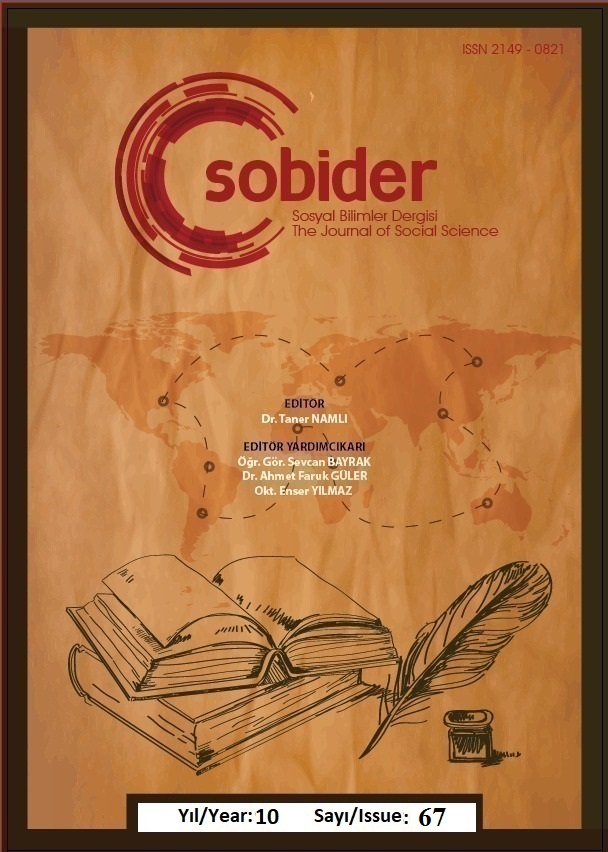Author :
Abstract
Uygur alfabesiyle yazılan Oğuz Kağan Destanı sunduğu malzeme ile Türk mitolojisi, tarihi ve grameri bakımından oldukça özel bir metindir ve söz konusu alanlar bakımından da ayrı ayrı inceleme konusu olmuştur. Eserin yazıya geçirildiği dönem ve saha hakkındaki çıkarımlar İslamiyet sonrasına işaret etmekle birlikte destandaki kurgu, mitolojik ve kozmogonik ögeler, Oğuz Han ile tarihi bir kişilik olan Mete Han arasında kurulan ilgi metnin İslamiyet öncesinde şekillenen çekirdek kurgusuna işaret eder. Türk destan geleneğinde tarihi olaylar ve kahramanlar etrafında tertip edilip zenginleştirilerek kuruluş kazanan destanların oldukça eski bir zamanda temellendiği ve yazıya geçirildiği döneme kadar da sözlü kültür sayesinde varlığını koruduğu bilinmektedir. Oğuz Kağan Destanı’nda geçen kök böri bolsungıl uran cümlesinde +gIl eki daha önce benzeri görülmemiş bir kullanımla karşımıza çıkmaktadır. Yaygın gramer çalışmalarında bu ekin ikinci şahsa yönelik emir ifadesini pekiştirme işleviyle değerlendirildiği ve Hint Avrupa dilleri referans alınarak eke enklitik, pekiştirme edatı, pekiştirme eki özelliği atfedildiği görülür. +gIl ekinin söz konusu metinde ikinci şahsı karşılamak ve pekiştirme belirtmek üzere kullanılmadığı tarihi metinlerden alınan örneklerle tartışılacak, bu ekin bir çokluk eki olduğu ekleşme sisteminin ışığında izah edilecek ve Oğuz Kağan Destanında da çokluk eki olarak kullanıldığı ortaya konacaktır.
Keywords
Abstract
The Epic of Oğuz Kağan, written in the Uyghur alphabet, is a very special text in terms of Turkish mythology, history and grammar with the material it presents and has been the subject of separate examination in terms of these areas. Although the inferences about the period and field in which the work was written point to the post-Islamic era, the fiction, mythological and cosmogonic elements in the epic, and the relationship established between Oğuz Kağan and Mete Han, a historical figure, point to the core fiction of the text, which was shaped before Islam. It is known that epics, which were organized and enriched around historical events and heroes in the Turkish epic tradition, were founded in a very old time and maintained their existence thanks to oral culture until the period when they were written down. In the sentence Kök böri bolsungıl uran in the Epic of Oğuz Kağan, the +gIl suffix appears in an unprecedented usage. In common grammatical studies, it is seen that this suffix is evaluated with the function of reinforcing the imperative expression for the second person, and with reference to Indo-European languages, the suffix is attributed the feature of enclitic, intensifying preposition, and intensifying suffix. It will be discussed with examples taken from historical texts that the +gIl suffix is not used to meet the second person and to indicate reinforcement in the text in question, it will be explained in the light of the suffixation system that this suffix is a plural suffix, and it will be revealed that it is also used as a plural suffix in the Oğuz Kağan Epic.





